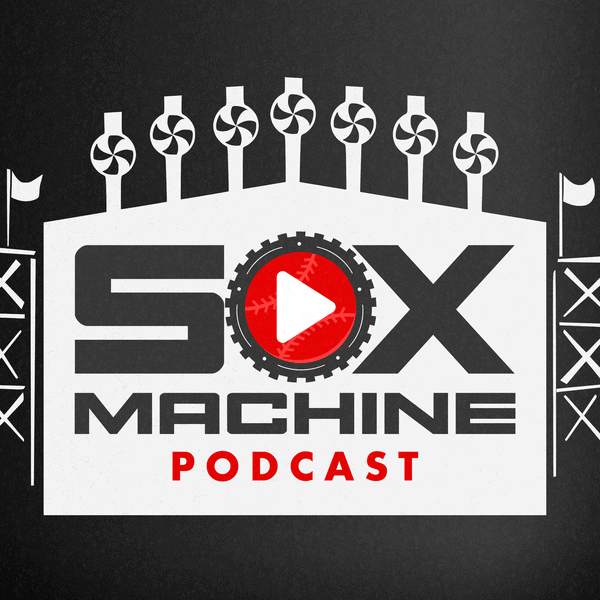We're still in the part of the season where teams move significantly up and down the chase rate rankings day to day. Feel free to speculate about why, but the White Sox's plate discipline numbers looked better when they were fresh off facing Sean Newcomb Friday night versus just after getting no-hit for seven innings by Garrett Crochet.
So it's not objectively headline-worthy that the White Sox only have the 16th-highest chase rate in MLB through 15 games. But we're also at a point in franchise history where it's pretty notable for them to not be the worst at this at any point.
Per Statcast numbers on out-of-zone swing rate, White Sox hitters chased at the fourth-highest rate in MLB in 2024. They (easily) had the highest rate in 2023, and underplayed their talent level due to chasing at the second-highest rate in 2022. They were pretty good offensively in 2021, but still had the sixth-highest chase rate, which felt like a step forward from the third-highest mark in 2020.
If you can believe that they maintained this trend with a revolving door of personnel, they were third in 2019, second in 2018, fourth in 2017, third in 2016, third in 2015, and third once more in 2014. So yeah, White Sox hitters being middle of the pack in this very acute historical area of weakness after two and a half weeks of games deserves at least as much enthusiasm as general manager Chris Getz radiated about the primary and secondary leads his team has been taking so far.
"Our swing decisions have been at the top of the league," Getz said on Friday. "Which is a testament to the process that we've put in place and the execution of these players. Obviously, it hasn't showed up in the win-loss column. But we know over time that we're certainly on the right track."
It's plausible Getz could have been referring to a post about Driveline Baseball's in-house metrics, rather than the public numbers I'm pulling from FanGraphs. But also the larger umbrella of "swing decisions" would also include swinging inside the strike zone, where the White Sox rank 10th-highest, since many of the teams that rank among the best at avoiding chases are just largely more passive on all pitches, and that's not a fair description of how the Sox have made early progress. There are also shades of gray within either of these larger categories. Tim Anderson had a nice little prime of spraying singles to right field on pitches off the outside edge that would traditionally get tagged as chases, and hitters who try to cover the entire strike zone rather than focus on the quadrant where they can do damage are usually doing themselves a disservice.
As the introduction to this piece would suggest, chasing was an offseason focus for the White Sox's hitting group, but hitting coach Marcus Thames couched it in identifying which parts of the zones were each hitter's strength and not deviating from it.
"It was one of the things that really we harped on this winter when we had one-on-one meetings with guys, what we were really going to focus on in spring training also, but even in their offseason work we wanted to make sure guys are swinging at the right pitches," said hitting coach Marcus Thames. "You see teams that are in the playoffs, or any winning team, they don't chase, they don't expand, they try to focus on getting a good pitch. Good results happen when that cycle is in place."
Of course, the White Sox are not actually getting good results right now.
They have scored 50 runs in 15 games (3.3). They are tied for the fourth-fewest home runs in MLB, and they have the second-lowest weighted on-base average on their contact (wOBAcon, for you acronym enthusiasts) in the sport. Their wOBAcon is lower than 21 teams' total wOBA; a figure that includes strikeouts. All of that is to say that the gulf between the White Sox offense's ability to do damage and the rest of the league's has outweighed their ability to court good pitches to hit, and probably will continue to this season with the current personnel. Only halfway through April, they are already in the sort of lean period that puts the commitment to a disciplined plate approach to the test.
"If you look at the overall numbers, we're swinging at the right pitch, we're hitting balls hard, but sometimes you don't get anything to show for it," Thames said. "But you can't change course."
And how much of these gains are personnel? New starting catcher Matt Thaiss is the most judicious hitter on the team, followed by Jacob Amaya, Nick Maton and Miguel Vargas, who are not all necessarily locks to be on the next good White Sox team, even if Chase Meidroth's minuscule 5.3 percent chase rate in his first weekend should soon put him in this crop. Moreover, they are difficult reads for whether their approach has meaningfully developed in-house, or if they just represent the front office trying to build a culture of high quality at-bats through their additions.
"We're not just talking about one player," Getz said. "We're talking about an entire roster of improved plate discipline. That's certainly an indicator that we're on the right track. Obviously it's still early and time will tell. I know that the early signs are really positive, and that was something we were really intentional about coming into spring training with our work and our approach and our communication with our players, and that they've taken to it."
Lenyn Sosa, Andrew Vaughn, Brooks Baldwin and Luis Robert Jr. are more established aggressive swingers in tow, and meaningful gains for them would be more eye-opening in establishing the organization's ability to make hitters better. Robert's opening to the season where he's already walked more times (six) than he did in the final month of 2024 while shaving three percentage points off his chase rate, would be a proof-of-concept type of showing. But his lack of traditional production makes it the one thing to hold onto about Robert's offensive start, and the lack of true success has him a little shy of endorsing his current state of operations.
"I’ve been feeling good in that aspect," Robert said via interpreter. "In my career, I never had like five or six walks in the period of 12 games. I think that’s good. I’m still working through that because I think I can do better. I can be better, but still it’s a work in progress."
Purchasing a whole Trajekt machine is the sort of tangible investment in improving team swing decisions that stands out among a host of new equipment that's visible around team facilities. For players whose major league viability is dependent upon plate discipline gains, it's offers something to dive into at least.
"It's obviously something that can help me a lot," Sosa said via interpreter. "You're basically facing the pitcher that you're going to face that day, and that gives you an understanding of how his pitches move and it puts you in a better position to face the pitcher during in the game, and in my case I think it makes me better."
But it's also nothing that isn't becoming commonplace around the league, and the White Sox are safer looking at their technological additions as an effort to keep pace than a leg up. So along with the medicine balls set up behind the plate to represent the heart of the zone in every batting practice session, and cage drills on strike-to-ball pitches, they're rooting their focus more in just making it clear that plate discipline matters a lot at every step of the organization.
"It's another tool in the toolbox," Thames said of Trajekt. "It's a whole organizational thing. It's not just myself. It's [assistant hitting coach] Joel [McKeithan], it's Ryan [Fuller], it's Getzy, it's Will as a manager getting the buy-in from everybody and just driving home the focus that we want and the goals that we're shooting for are going to pay dividends."
It's just that the dividends that the current player group is dedicating itself to might not come until there is more significant talent overhaul.






